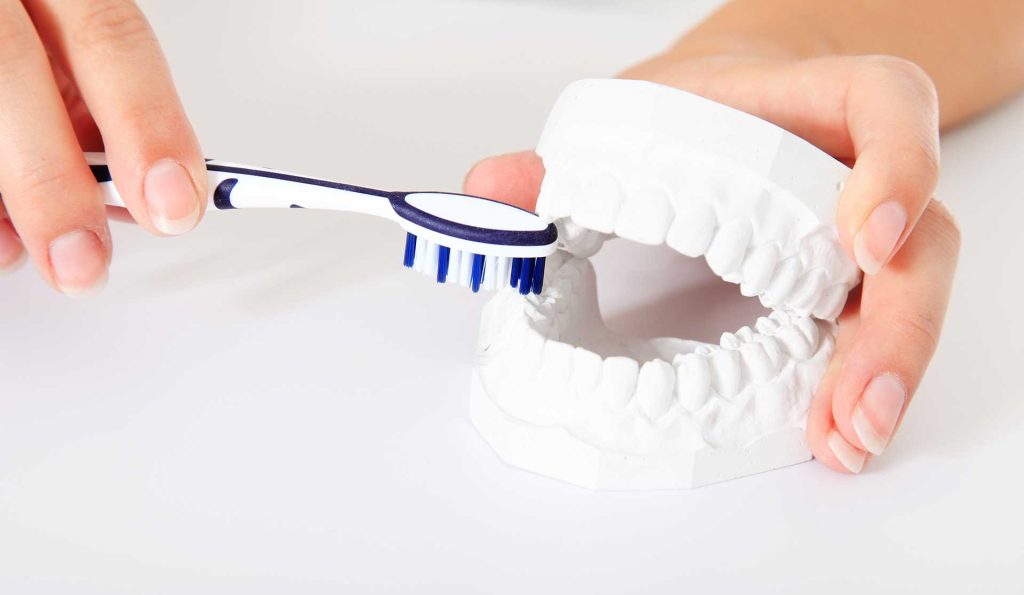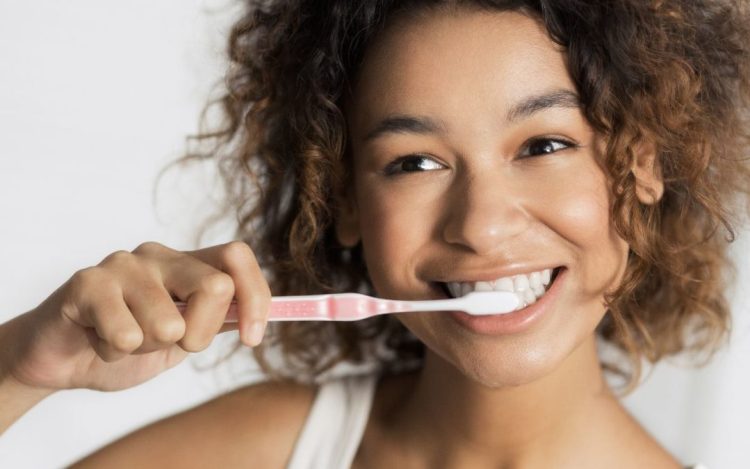Brushing your teeth is the foundation of your oral health routine. While it may seem like a simple task, many people unknowingly make mistakes that can affect the effectiveness of their brushing technique. The truth is, brushing your teeth properly is crucial for maintaining good oral hygiene and preventing dental issues like cavities, gum disease, and bad breath. Unfortunately, even with the best intentions, it’s easy to develop habits that may not be as effective as they should be.
In this article, we’ll explore the five most common mistakes people make when brushing their teeth and provide guidance on how to avoid them. We’ll also delve into the proper brushing techniques to maximize cleanliness, as well as tips for selecting the right toothbrush and toothpaste to suit your specific oral needs.
Common Mistakes People Make When Brushing Their Teeth
1. Brushing Too Hard
One of the most common mistakes people make is brushing their teeth too hard. Many individuals believe that brushing with excessive force will result in cleaner teeth, but this could not be further from the truth. Brushing too hard can cause harm to both your enamel and gums. The abrasive action can erode the enamel, which is the thin, protective layer that coats your teeth, leading to tooth sensitivity and increased susceptibility to cavities. In addition, brushing too hard can lead to gum recession, which can expose the tooth roots and cause further dental complications.
Another factor to consider is the type of toothbrush you use. Hard-bristled brushes can exacerbate these issues, which is why it’s essential to opt for a toothbrush with soft bristles, especially if you tend to apply a lot of pressure when brushing.
How to Correct It:
To avoid this mistake, use a soft-bristled toothbrush and practice gentle brushing. When brushing, hold the toothbrush with a light grip and allow the bristles to do the work. Instead of pressing down hard, use circular or back-and-forth motions. The goal is to clean your teeth without causing damage to the enamel or gums.
2. Brushing for Too Short a Time
A lot of people tend to rush through their brushing routine, spending only a short amount of time on it. The American Dental Association (ADA) recommends brushing for two minutes to ensure that you clean all surfaces of your teeth properly. However, many people fail to meet this guideline, brushing for only 30 seconds or less. Inadequate brushing time means that plaque, bacteria, and food particles are not thoroughly removed from your teeth and gums, leading to the buildup of plaque and increasing the risk of dental issues like cavities and gum disease.
How to Correct It:
To make sure you brush for the recommended two minutes, you can use a timer or a toothbrush with a built-in timer. There are also smartphones and electric toothbrush apps that allow you to track your brushing time. Divide your mouth into four quadrants—upper left, upper right, lower left, and lower right—and spend 30 seconds brushing each quadrant. This will ensure that you clean your teeth thoroughly and evenly.
3. Not Brushing All Surfaces of Your Teeth
It’s easy to focus only on the visible surfaces of your teeth, especially the outer sides, but this is one of the most common brushing mistakes people make. Many people fail to clean the inner surfaces, the chewing surfaces, or the gum line, leaving bacteria and plaque behind, which can lead to cavities, gum disease, and bad breath. Additionally, the back teeth—the molars—are often neglected, which are the teeth most prone to cavities due to their complex chewing surfaces.
How to Correct It:
When brushing, ensure that you clean all the surfaces of your teeth:
- Outer surfaces: Brush the outer surfaces of your teeth using gentle, circular motions.
- Inner surfaces: Hold the brush vertically and use up-and-down strokes to clean the inner surfaces of your teeth, especially the front ones.
- Chewing surfaces: Use short, back-and-forth strokes to clean the flat chewing surfaces of your molars and premolars.
- Along the gum line: Don’t neglect the gum line; gently brush where your teeth meet the gums to remove plaque buildup that can lead to gum disease.
In addition to brushing, it’s important to floss daily to remove plaque and food particles from between your teeth, as brushing alone may not be enough.
4. Using the Wrong Toothbrush or Toothpaste
Using the wrong toothbrush or toothpaste can significantly impact the effectiveness of your oral hygiene routine. Many people opt for a toothbrush with hard bristles, thinking it will clean their teeth better, but this can actually damage your enamel and gums. Similarly, using toothpaste that is not suitable for your needs can also undermine your brushing efforts. For example, if you suffer from tooth sensitivity and use regular toothpaste, you may experience discomfort. On the other hand, if you have specific concerns like plaque buildup or staining, using the wrong toothpaste can prevent you from achieving the best results.
How to Correct It:
To choose the right toothbrush, consider the following:
- Soft bristles: Choose a toothbrush with soft bristles, as they are less likely to damage your enamel and gums.
- Electric toothbrush: An electric toothbrush can be more effective in removing plaque, especially for those who have difficulty brushing properly by hand.
- Comfortable handle: Make sure the toothbrush fits comfortably in your hand so you can brush effectively.
When selecting toothpaste, make sure it addresses your specific needs:
- Fluoride toothpaste: Most dentists recommend using toothpaste that contains fluoride to help prevent cavities and strengthen enamel.
- Toothpaste for sensitive teeth: If you have sensitive teeth, use toothpaste designed for sensitivity to minimize discomfort.
- Tartar control toothpaste: If you have a tendency to develop tartar, consider using toothpaste that helps prevent tartar buildup.
- Whitening toothpaste: If you want to whiten your teeth, opt for toothpaste designed to remove surface stains, but be cautious of abrasive formulas that could damage your enamel.

5. Brushing Immediately After Eating or Drinking Acidic Foods
It may seem natural to brush your teeth after eating or drinking, especially after consuming something acidic like citrus fruits, tomatoes, or soda. However, brushing immediately after consuming acidic foods or drinks can do more harm than good. The acid in these foods temporarily softens the enamel on your teeth, and brushing right after can erode the enamel and lead to sensitivity or decay over time.
How to Correct It:
If you’ve eaten or drunk something acidic, wait for at least 30 minutes before brushing your teeth. This gives your enamel time to re-harden. In the meantime, you can rinse your mouth with water to neutralize the acids and wash away any food particles. Drinking water after meals can also help minimize the effect of acidic foods on your enamel.
Proper Brushing Techniques to Maximize Cleanliness
To ensure you’re brushing your teeth effectively, it’s crucial to follow the right techniques. Here’s a step-by-step guide on how to brush your teeth properly:
- Choose the right toothbrush: Opt for a soft-bristled toothbrush with a comfortable grip. If possible, choose an electric toothbrush with a timer to help you brush for the recommended two minutes.
- Apply a pea-sized amount of toothpaste: Use just a small amount of toothpaste—about the size of a pea. This is enough to clean your teeth effectively.
- Brush gently: Brush your teeth using gentle circular or back-and-forth motions. Avoid brushing too hard, as this can damage your gums and enamel.
- Focus on each quadrant: Divide your mouth into four sections—upper left, upper right, lower left, and lower right—and spend at least 30 seconds on each section. This will ensure that you cover every surface of your teeth.
- Don’t forget your tongue: Plaque can build up on your tongue as well, leading to bad breath. Gently brush your tongue with the bristles of your toothbrush or use a tongue scraper.
- Floss daily: Brushing alone is not enough to remove plaque from between your teeth. Make sure to floss at least once a day to keep your gums and teeth healthy.
- Rinse your mouth: After brushing, rinse your mouth with water or a fluoride mouthwash to help kill bacteria and leave your mouth feeling fresh.
How to Choose the Right Toothbrush and Toothpaste
When selecting the right toothbrush and toothpaste for your needs, consider your specific oral health requirements. Here are some guidelines for choosing the best options:
- Toothbrushes: Look for a toothbrush with soft bristles to protect your enamel and gums. If you have difficulty brushing or need extra help cleaning your teeth, an electric toothbrush may be a good option. For those with dexterity issues, an electric toothbrush with a timer is particularly useful to ensure you brush for the recommended two minutes.
- Toothpaste: Always choose a toothpaste that contains fluoride to protect against cavities. If you have sensitive teeth, look for toothpaste specifically formulated for sensitivity. If you need help with tartar buildup or plaque, choose a toothpaste with tartar control properties. For those seeking whiter teeth, a whitening toothpaste can be beneficial, but be cautious of overly abrasive formulas.
Conclusion
Brushing your teeth correctly is essential for maintaining good oral hygiene and preventing dental problems. By avoiding common mistakes like brushing too hard, brushing for too short a time, and neglecting to clean all surfaces of your teeth, you can maximize the effectiveness of your brushing routine. Additionally, using the right toothbrush and toothpaste for your needs can make a significant difference in your overall oral health.
By following the proper brushing techniques and maintaining a consistent routine, you can keep your teeth healthy, your gums strong, and your smile bright. So the next time you brush your teeth, remember to take your time, use gentle motions, and pay attention to every surface of your mouth. With these simple changes, you’ll be well on your way to better oral hygiene and a healthier smile.













































Discussion about this post